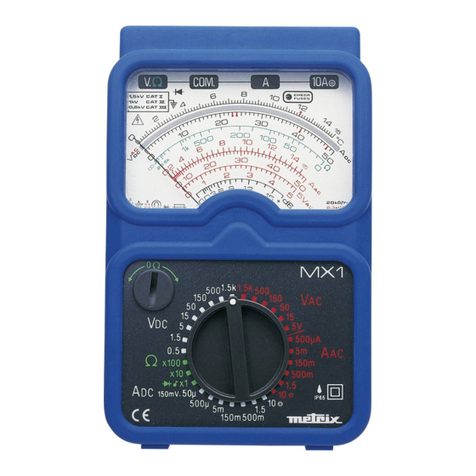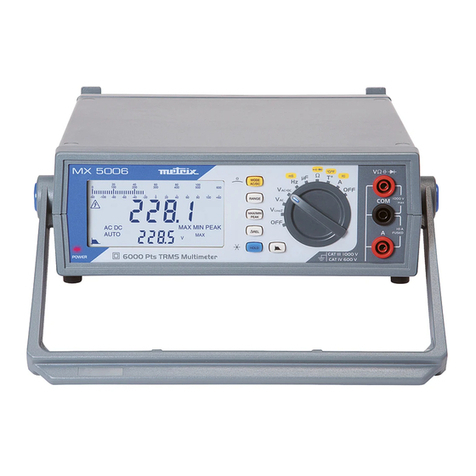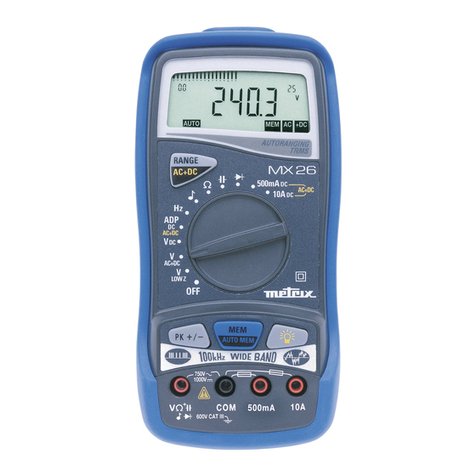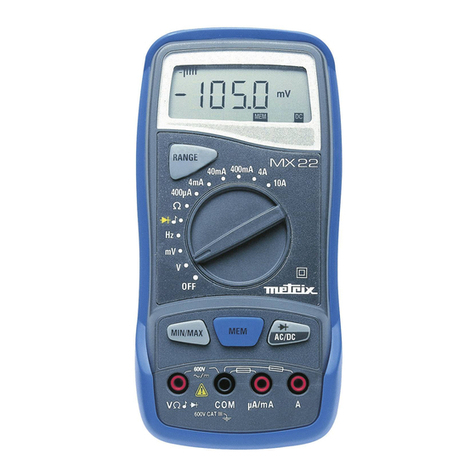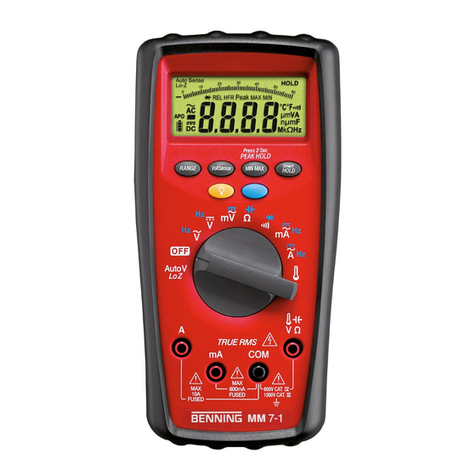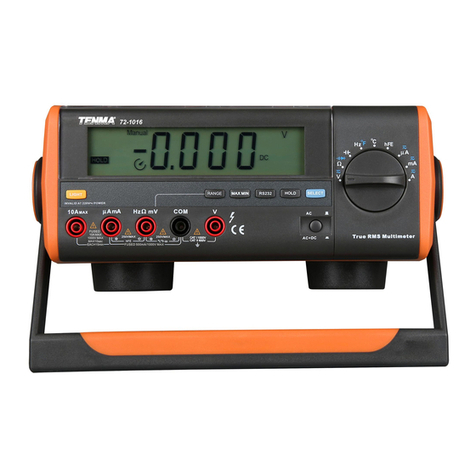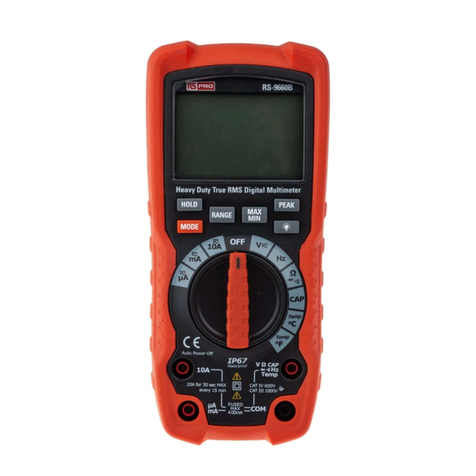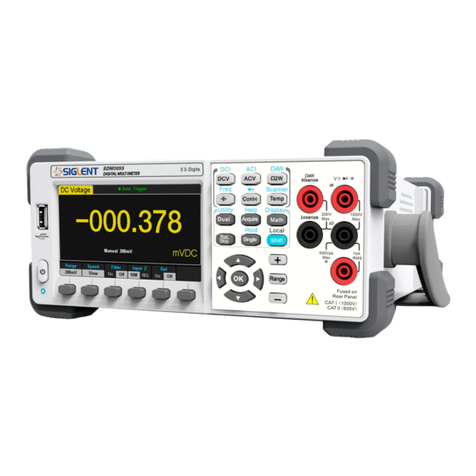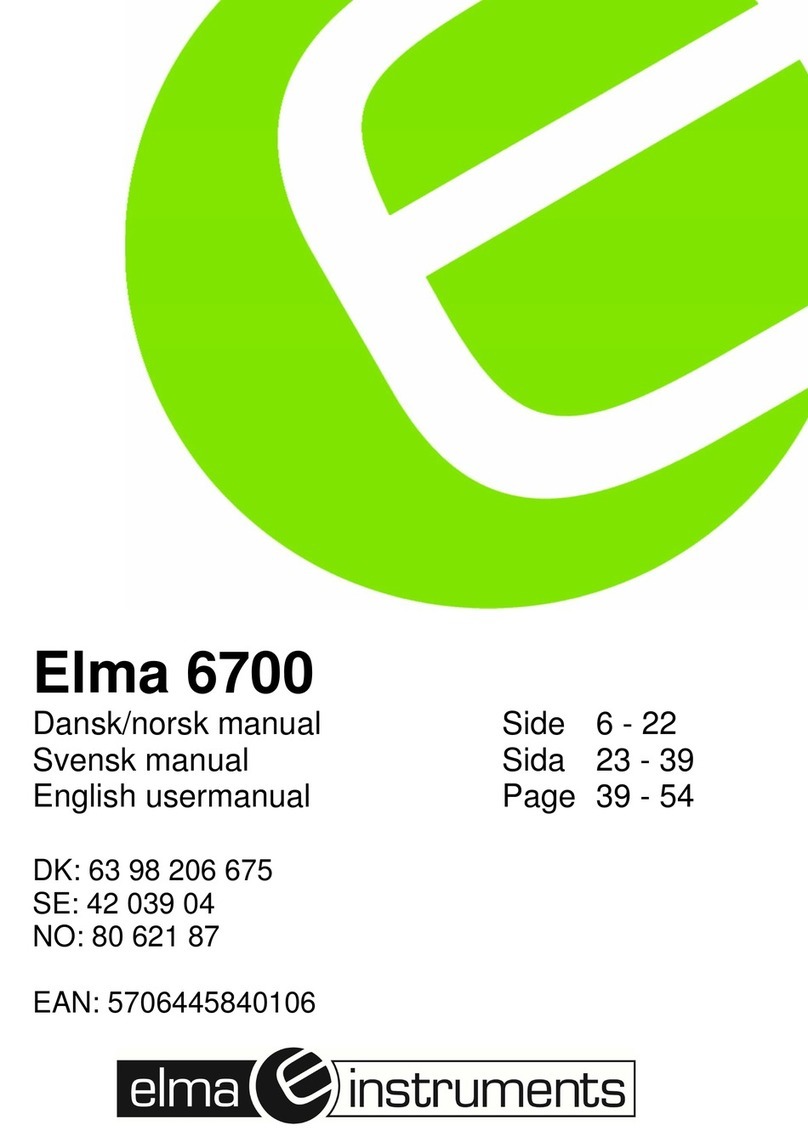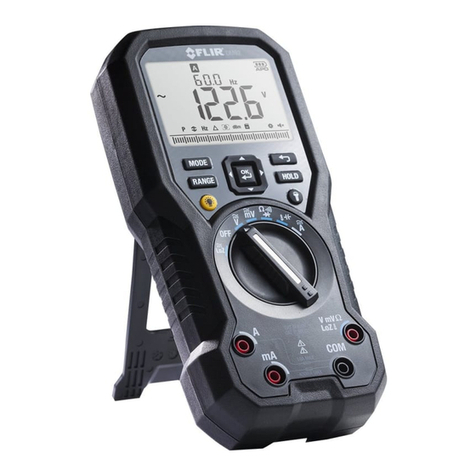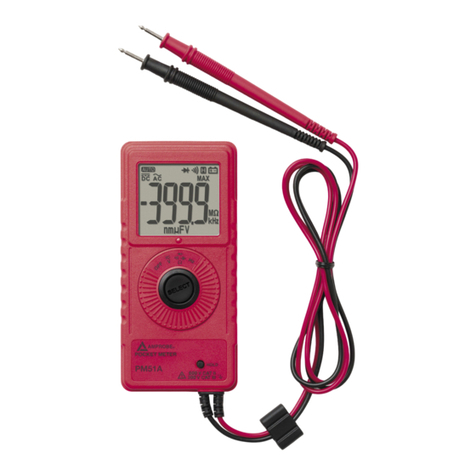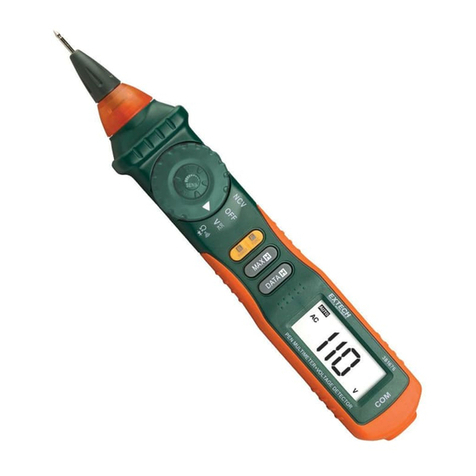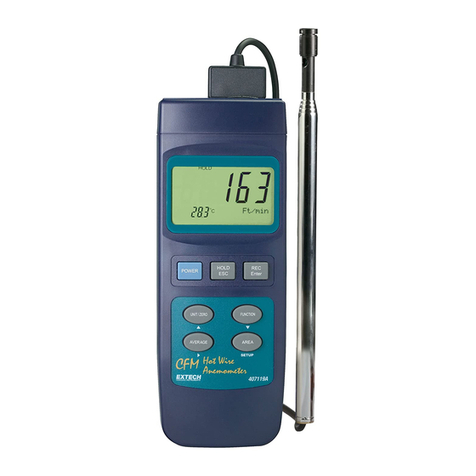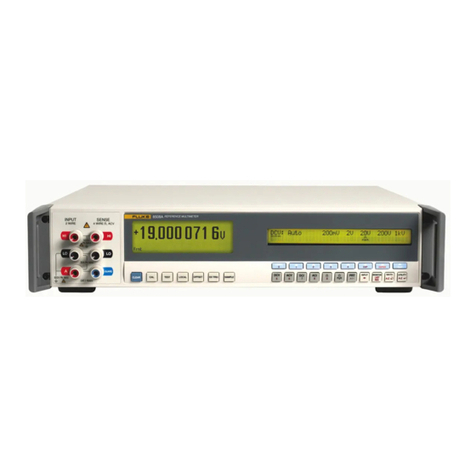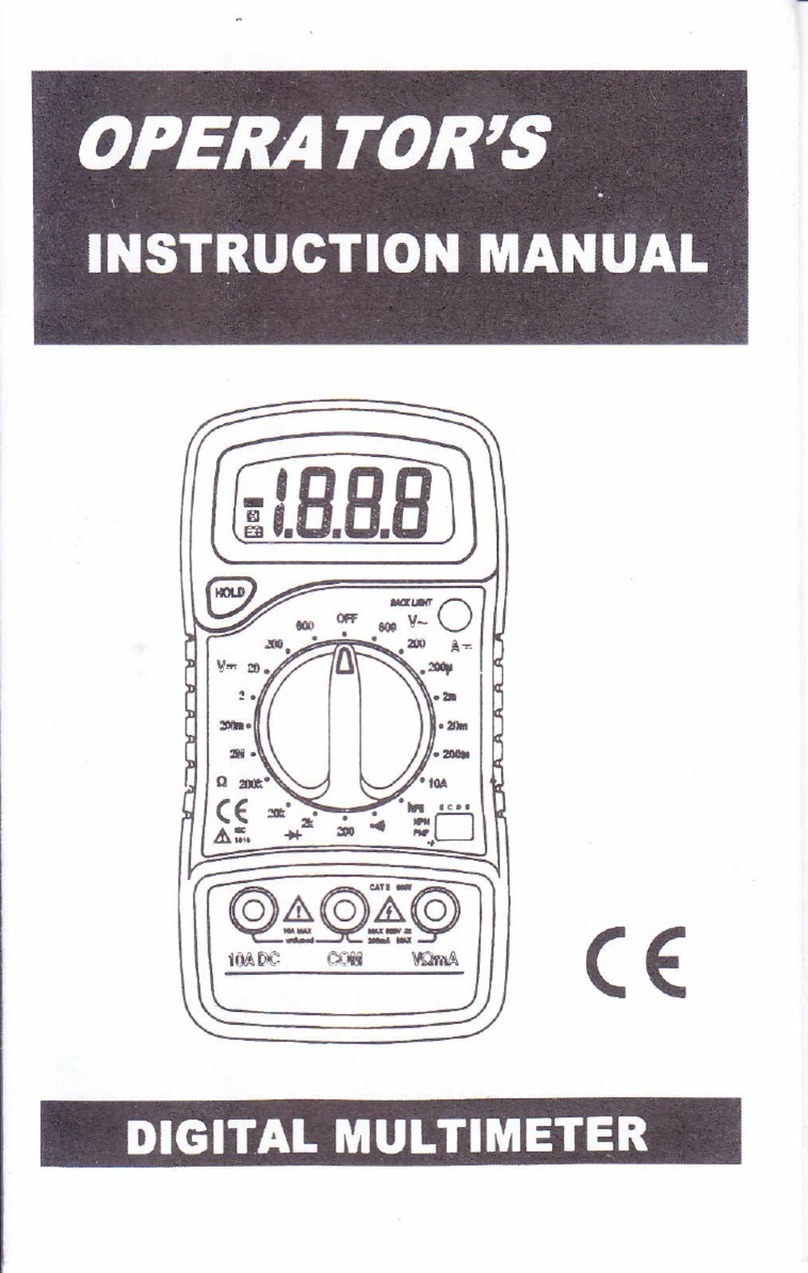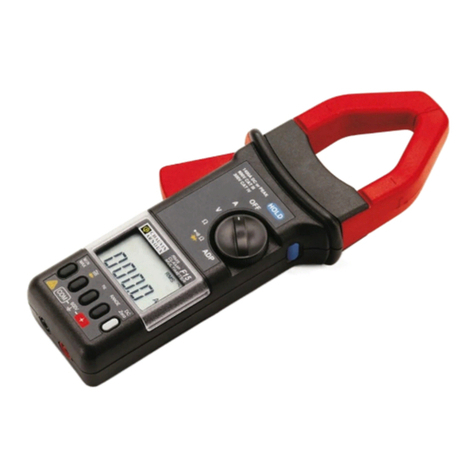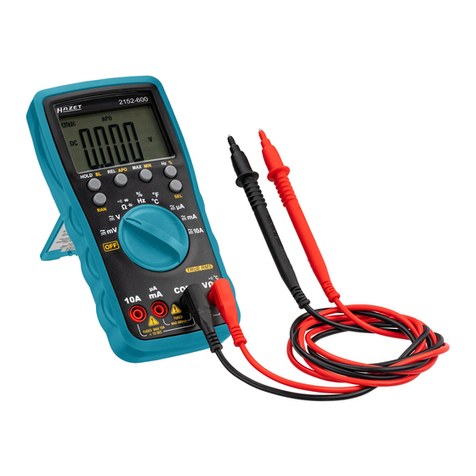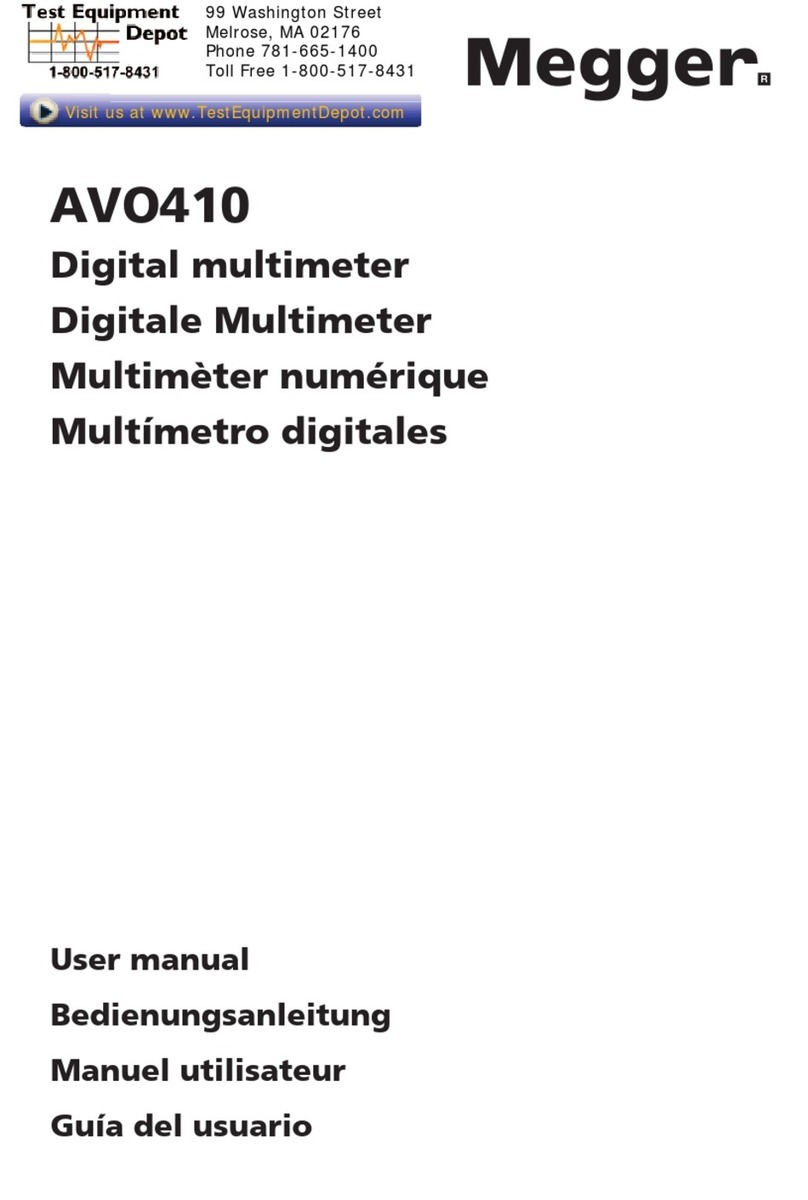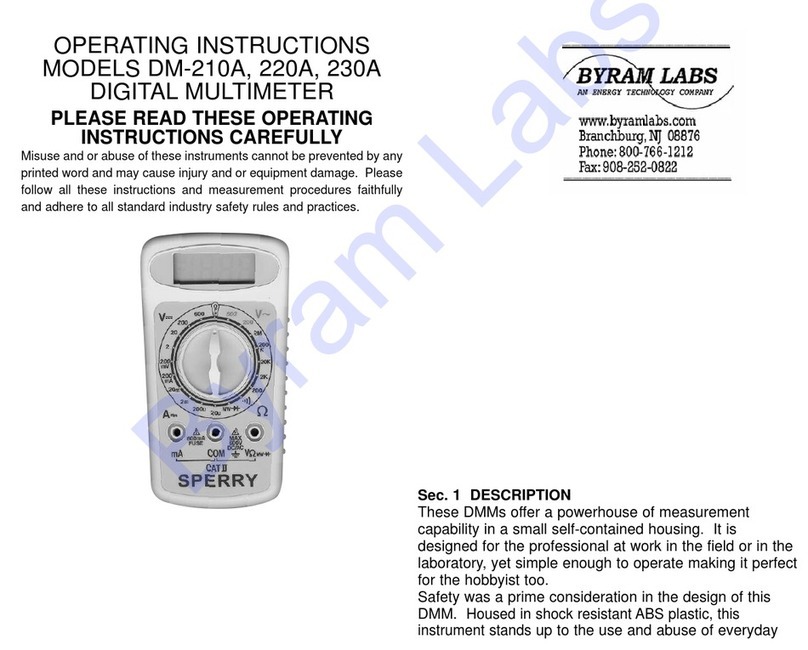Metrix MX 58HD User manual

MX 58HD
Notice de fonctionnement
User's manual
Bedienungsanleitung
Libretto d’istruzioni
Manual de instrucciones
ENGLISH - page 16 Chapter II
Office: Jl. Radin Inten II No. 62 Duren Sawit, Jakarta 13440 - Indonesia
Workshop: Jl. Pahlawan Revolusi No. 22B, Jakarta 13430 - Indonesia
Phone: 021-8690 6777 (Hunting) Fax: 021-8690 6777
Mobile: +62 816 1740 8925
Fax: 021-8690 6771
Office: Jl. Radin Inten II No. 62 Duren Sawit, Jakarta 13440 - Indonesia
Workshop: Jl. Pahlawan Revolusi No. 22B, Jakarta 13430 - Indonesia
Phone: 021-8690 6777 (Hunting) Fax: 021-8690 6777
Mobile: +62 816 1740 8925
Fax: 021-8690 6771

Multimètre digital portable
8
9
7
10
11
12
13
5
20
6
19
18
17
16
15
14
1 2 3 4

Multimètre digital portable
LEGENDE / CAPTION / BESCHREIBUNG / LEGENDA / LEYENDA
1 Borne d'entrée calibres 11, 12, 13, 14, 15 11 Mesure de tensions alternatives
2 Entrée de référence du multimètre 12 Mesure de tensions 500 mV
3 Borne d'entrée calibres mA 13 Mesure de tensions continues
4 Borne d'entrée calibre 10 A 14 Mesure de résistance
5 Mise sous tension (sélection fonctions secondaires) 15 Mesure de capacité
6 Changement de gamme 16 Mesure de courant jusqu’à 5 mA
7 Mesure en mode relatif 17 Mesure de courant jusqu’à 50 mA
8 Mesure de crêtes 18 Mesure de courant jusqu’à 500 mA
9 Gel de l'affichage 19 Mesure de courant jusqu’à 10 A
10 Mise hors tension 20 Envoi de données vers imprimante
1 Input terminal, ranges 11, 12, 13, 14, 15 11 AC voltage measurement
2 Multimeter reference input 12 500 mV voltage measurement
3 Input terminal, ranges mA 13 DC voltage measurement
4 Input terminal range 10 A 14 Resistance measurement
5 Power on (selects secondary functions) 15 Capacitance measurement
6 Range change 16 Current measurement up to 5 mA
7 Relative mode measurement 17 Current measurement up to 50 mA
8 Peak measurement 18 Current measurement up to 500 mA
9 Display hold 19 Current measurement up to 10 A
10 Power off 20 Data sending to a printer
1 Eingangsbuchse für Meßbereiche 11,12,13,14,15 11 Messung von AC-Spannungen
2 COM-Eingangsbuchse 12 Spannungsmessung bis 500 mV
3 Eingangsbuchsen mA 13 Messung von DC-Spannungen
4 Eingangsbuchse 10 A 14 Widerstandsmessung
5 Multimeter Einschalten (+ Zweitfunktionen) 15 Kapazitätsmessung
6 Bereichsumschaltung 16 Strommessung bis 5 mA
7 Relativ-Messung 17 Strommessung bis 50 mA
8 Spitzenwertmessung 18 Strommessung bis 500 mA
9 Anzeige speichern 19 Strommessung bis10 A
10 Multimeter Ausschalten 20 Sendung von Angaben zum Drucker
1 Borne de entrada calibres 11, 12, 13, 14, 15 11 Medida de tensiones alternativas
2 Entrada de referencia del multÍmetro 12 Medida de tensiones 500 mV
3 Borne de entrada calibres mA 13 Medida de tensiones continuas
4 Borne de entrada calibre 10 A 14 Medida de resistencias
5 Puesta en servicio (+ funciones segundarias) 15 Medida de capacidades
6 Cambio de calibre 16 Medida de corrientes hasta 5 mA
7 Medidas relativas 17 Medida de corrientes hasta 50 mA
8 Medidas de cresta 18 Medida de corrientes hasta 500 mA
9 Memorizacion de la representacion visual 19 Medida de corrientes hasta 10 A
10 Puesta fuera de servicio 20 Transmisión de los datos hacia una
impresora
1 Boccola d’ingresso portate 11, 12, 13, 14, 15 11 Misura delle tensioni alternate
2 Ingresso di riferimento del multimetro 12 Misura delle tensioni 500 mV
3 Boccola d’ingresso portate mA 13 Misura delle tensioni continue
4 Boccola d’ingresso portata 10 A 14 Misura di resistenza
5 Accensione (scelta funzioni secondarie) 15 Misura della capacità
6 Cambiamento di portata 16 Misura di corrente fino a 5 mA
7 Misura in modalità relativa 17 Misura di corrente fino a 50 mA
8 Misura delle creste 18 Misura di corrente fino a 500 mA
9 Immobilizzazione della visualizzazione 19 Misura di corrente fino a 10 A
10 Spegnimento 20 Invio dati verso la stampante

Chapter II
16 Portable digital multimeter
CONTENTS
1. GENERAL INSTRUCTIONS.................................................................................................................17
1.1. Precautions and safety measures..................................................................................................17
1.2. Protection devices..........................................................................................................................18
1.3. Safety devices ................................................................................................................................19
1.4. Warranty.........................................................................................................................................19
1.5. Maintenance...................................................................................................................................21
1.6. Unpacking - Repacking..................................................................................................................19
2. DESCRIPTION......................................................................................................................................20
2.1. Selector switch ...............................................................................................................................20
2.2. Keypad............................................................................................................................................20
2.3. Display............................................................................................................................................20
2.4. Power supply..................................................................................................................................20
2.5. Input terminals................................................................................................................................20
3. COMMISSIONING ................................................................................................................................21
3.1. Connecting the test leads...............................................................................................................21
3.2. Switching on the instrument...........................................................................................................21
3.3. Switching off the instrument...........................................................................................................21
3.4. Special configurations....................................................................................................................21
3.5. Multimeter maintenance.................................................................................................................22
4. FUNCTIONAL DESCRIPTION .............................................................................................................23
4.1. SEL/ON key...................................................................................................................................23
4.2. RANGE key ....................................................................................................................................25
4.3. REL key..........................................................................................................................................25
4.4. Pk +/- key........................................................................................................................................25
4.5. HOLD key.......................................................................................................................................26
4.6. PRINT key ......................................................................................................................................26
5. TECHNICAL SPECIFICATIONS ..........................................................................................................27
5.1. DC voltages....................................................................................................................................27
5.2. AC voltages (AC and AC+DC).......................................................................................................27
5.3. DC current ......................................................................................................................................28
5.4. AC currents (AC and AC+DC)........................................................................................................28
5.5. Resistance / Continuity...................................................................................................................28
5.6. Capacitance....................................................................................................................................29
5.7. Diode threshold voltage measurement ..........................................................................................29
5.8. Frequencies....................................................................................................................................29
5.9. Duty cycle %+, %- ..........................................................................................................................29
6. GENERAL SPECIFICATIONS..............................................................................................................30
6.1. Accessories....................................................................................................................................31

Chapter II
Portable digital multimeter 17
1. GENERAL INSTRUCTIONS
You have just acquired a 5000 count-portable digital multimeter and we thank you for your
confidence.
This instrument complies with the specification of EN publication 61010-1, concerning safety
requirements for electronic measuring apparatus. To get the best service from this instrument,
read carefully this user’s manual and respect the detailed safety precautions.
1.1. Precautions and safety measures
1.1.1. Before use
•This instrument has been designed for use indoors:
- in an environment with pollution level 2,
- at an altitude of less than 2000 m,
- at a temperature between 0°C and 50°C,
- with relative humidity of less than 80 % up to 40°C.
•It can be used for measurements on the following types of circuits:
-Measurement category III for voltages no higher than 600 V (AC or DC)
in relation to the earth and between input terminals.
-Measurement category IV for voltages no higher than 600 V (AC or DC)
in relation to the earth and between input terminals.
•Definition of measurement categories :
CAT I: Measurement category I is for measurements performed on circuits not directly
connected to mains.
E.g.: protected electronic circuits
CAT II : Measurement category II is for measurements performed on circuits directly connected
to the low voltage installation.
E.g.: power supply to domestic appliances and portable tools.
CAT III : Measurement category III is for measurements performed in the building installation
E.g.: machine or industrial apparatus power supply.
CAT IV : Measurement category IV is for measurements performed at the source of the low-
voltage installation.
E.g.: energy inputs
∗For your own safety, only use the measuring probes which have been delivered with the
instrument : they conform to the EN 61010-031 safety standard. Before use, check that
they are in good condition.
∗The safety of any system incorporating this instrument is the responsibility of the system
assembler.
1.1.2. During use
∗Never exceed the protection limit values indicated in the specifications for each type of
measurement.
∗When the multimeter is linked to measurement circuits, do not touch unused terminals.
∗When the scale of the value to be measured is unknown, check that the scale initially
set on the multimeter is the highest possible or, wherever possible, choose the
autoranging mode.
∗Before changing functions, disconnect the test leads from the circuit under test.

Chapter II
18 Portable digital multimeter
∗When performing current measurements, never change of range, do not connect or
disconnect leads without first isolating the current. If you do, there is a risk of
generating surge currents which can blow the fuses or damage the instrument.
∗In TV repair work, or when carrying out measurements on power switching circuits,
remember that high amplitude voltage pulses at the test count can damage the
multimeter. Use of a TV filter will attenuate any such pulses.
∗Never perform resistance, condenser and diode measurements on live circuits.
1.1.3. Symbols
WARNING : Risk of danger.
Refer to the operating manual to
find out the nature of the
potential hazards and the action
necessary to avoid such hazards.
Selective sorting of waste for recycling
electric and electronic materials.
In accordance with the WEEE
2002/96/EC directive : must not be
treated as household waste.
Earth Dual insulation DANGER :
Risk of electrical shock
Consult the manual.
1.1.4. Opening the instrument
•Before opening the instrument, always disconnect from all sources of electric
current and make sure not to be loaded with static electricity, which may destroy
internal components.
•Fuses must be replaced with fuses of the same rating and type.
•Any adjustment, maintenance or repair work carried out on the multimeter should be
carried out only by appropriately qualified personnel, after having taken into account
the instructions in this present manual.
•A “qualified person” is one who is familiar with the installation, construction and
operation of the equipment and the hazards involved. He is trained and authorized
to energize, de-energize circuits and equipment in accordance with established
practices.
•It is recommended to remove the battery from the instrument if not used.
1.2. Protection
devices
ASYC II series instruments are fitted with various protection devices :
∗Varistor protection for limiting transients of over 1500 Vpk at the VΩterminal,
particularly 8 kV pulse streams as defined in French standard EN 61010-1 relative
to safety.
∗A PTC (Positive Temperature Coefficient) resistor protects against overvoltages up to
600 V during resistance, capacitance and diode measurements. This protection is
reset automatically once overload is over.
∗Two fuses provide protection during measurements of intensity type.
∗Maximum protection : 600 V
∗IP protection rating of 67

Chapter II
Portable digital multimeter 19
1.3. Safety devices
∗The battery unit and fuses cannot be accessed without first disconnecting the measuring
leads.
∗When measuring voltages above 24 V, the symbol blinks on the display.
∗If the maximum range is repeatedly exceeded, an intermittent audible signal indicates the
risk of electric shock.
1.4. Warranty
This equipment is warranted against any defects of manufacture or materials according to the
general conditions of sale.
During the warranty period (3 years), defective parts will be replaced, the manufacturer
reserving the right to repair or replace the product. In the event of the equipment being returned
to the after sale department or to a local agency, carriage to the centre shall be payable by the
customer.
The warranty does not cover the following :
•Repairs necessitated by misuse of the equipment or use in association with incompatible
equipment.
•Modification of the equipment or any related software without the explicit authorization of
the manufacturer.
•Repairs necessitated by attempts to repair or maintain the product made by a person not
approved by the manufacturer.
•Adaptation to a specific application not provided for in the specifications of the equipment
or the user manual.
•Damage after a drop, a shock or flooding.
The contents of this manual must not be reproduced in any form whatsoever without the
consent of the manufacturer.
1.5. Maintenance and metrological verification
Return your instrument to your distributor for any work to be done within or outside the
guarantee.
1.6. Unpacking - Repacking
This equipment has been fully checked out mechanically and electrically before shipping.
All precautions have been taken to ensure that the instrument arrives at its destination
undamaged.
However, it is advisable to carry out a rapid check for damage sustained in shipping.
If there is any evidence of damage, make this known immediately to the shipper.
*Caution Should you need to return the multimeter, preferably use the original
packaging and indicate the reasons as clearly as possible on an
accompanying note.

Chapter II
20 Portable digital multimeter
2. DESCRIPTION
This multimeter is one of the ASYC II (Advanced SafetY Concept, third generation) range,
designed for a high degree of user safety, maximum protection and unrivalled performance.
2.1. Selector switch
It is a standalone, handheld professional measuring instrument, capable of measuring the
following quantities (accessed by the eleven-position rotary selector switch) :
•AC voltages with AC (or RMS) capacitive coupling,
•AC voltages with AC+DC (or TRMS) direct coupling,
•DC voltages,
•AC currents with AC (or RMS) capacitive coupling
•AC currents with AC+DC (or TRMS) direct coupling,
•DC currents,
•resistance values,
•continuity (with beeper),
•capacitance,
•diode threshold voltage,
•frequencies,
•duty cycles
2.2. Keypad
A six-key keypad lets you :
•select the autoranging mode (RANGE key),
•freeze a value (HOLD key),
•measure fast peaks (Pk +/- key),
•set the measurement relative to a reference value (REL key),
•select a function derived from the main function, or switch on the
multimeter again after it has been shut down automatically (SEL/ON key),
•activate sending data to a printer (PRINT key).
2.3. Display
The display provides :
•clearly legible figures (14 mm high),
•an analogue readout of the parameter being measured through
a 34-segment bargraph,
•perform 5000-count measurements
2.4. Power supply
This multimeter is powered by a standard 9 V battery which provides approximately 500 hours of
operation.
2.5. Input terminals
Measurements are performed using two measuring leads supplied with the instrument
connected to input terminals 1, 2, 3 and 4, as indicated in section 3.1.

Chapter II
Portable digital multimeter 21
3. COMMISSIONING
3.1. Connecting the test leads
Connect the black lead to the COM socket (for all measurements). Depending on the position of
the selector switch, connect the red lead as follows:
Rotary selector switch position Input terminal
VAC, mVDC, VDC, Ω, VΩ
10 ADC 10 A
5 mADC, 50 mADC, 500 mADC 500 mA
3.2. Switching on the instrument
Turn the selector switch to the required function.
All segments of the display come on for a few seconds. The instrument is then ready for
measurements.
3.3. Switching off the instrument
The instrument can be switched off manually by returning the selector switch to the OFF
position, or automatically after approximately half an hour if no key is pressed or the switch is not
operated.
)Note Automatic shutdown of the instrument is disabled in order to avoid
interrupting the peak value measurements (Pk +/-), or the data print out.
For user safety, automatic shutdown is also disabled when a measured
magnitude (voltage/current) present at the input exceeds dangerous level
(
indicator displayed).
3.4. Special configurations
To adapt the configuration of the instrument to the measurement environment, the user can
choose 50 Hz or 60 Hz rejection :
Switch on with the rotary switch while holding down the HOLD key.
The selection :
•is reversed from the last configuration
•is displayed for two seconds
•remains backed up in non-volatile memory.

Chapter II
22 Portable digital multimeter
3.5. Multimeter
maintenance
3.5.1. Fuse self-test
When fuse F1 (0.63 A) or F2 (11 A) is blown, the display shows “FUSE.1” or “FUSE.2”,
accordingly.
If both fuses are blown, the display shows “FUSES”.
Replace the fuse or fuses concerned.
)Note Fuse F1 cannot be tested unless the switch is set to a mA position.
Fuse F2 is located in the common circuit. Therefore, all measurements
become impossible when it is out of service.
3.5.2. Battery self-test
When the BAT indication appears on the display, the instrument still has approximately
50 hours of operation, but specifications can no longer be guaranteed.
Replace the battery.
3.5.3. Replacing the battery or fuses
Disconnect the cords from the measured circuit, then multimeter.
Open the multimeter casing as follows (see last page of the manual) :
1 – Remove the stand from the back of the instrument. Figures 1 and 2
2 – Remove the front cover using the stand as a lever. Figures 3 and 4
3 – Remove the gasket.
4 – Replace the battery or fuse.
Before use, make sure that the gasket, then the front cover are carefully set back on the
instrument.
3.5.4. Cleaning
Clean the multimeter using a damp cloth. Do not use abrasives or solvents.

Chapter II
Portable digital multimeter 23
4. FUNCTIONAL DESCRIPTION
4.1. SEL/ON key
This can be used to switch on the multimeter again after an automatic shutdown. It can also be
used to access secondary functions associated with the selector switch positions.
The flowcharts below define these various functions.
4.1.1. VAC position
4.1.2. mV position
SEL/ON
SEL/ON
DC voltage measurement
500 mV range
AC+DC voltage measurement
500 mV range
SEL/ON
Duty cycle - measurement
Duty cycle + measurement
SEL/ON
Frequency measurement
SEL/ON
AC voltage measurement
SEL/ON

Chapter II
24 Portable digital multimeter
4.1.3. VDC position
4.1.4. Ωposition
4.1.5. position
SEL/ON
SEL/ON
AC+ DC voltage
measurement
DC voltage
measurement
SEL/ON
SEL/ON
Continuity test
Resistance measurement
SEL/ON
SEL/ON
Diode voltage measurement
Capacitance measurement

Chapter II
Portable digital multimeter 25
4.1.6. 5 mA / 50 mA / 500 mA / 10 A positions
4.2. RANGE key
•In AUTO mode to switch to MANUAL mode (short press).
•In MANUAL mode, to select the next range (short press) or return to AUTO mode (long
press).
Measurements concerned : AC or DC voltages, capacitance, resistance.
• When making time measurement : if the range change made during previous
measurements (voltage) was in manual mode, it may be necessary to adapt this
measurement range to the signal level injected at the input. This is why the RANGE key is
used to change from one range (voltage) to the next range. The new range is then
displayed for 2 seconds.
4.3. REL
key
Short press :Mode REL, the last value measured becomes the reference value derived
from subsequent measurements.
Long press : When in REL mode, a long press displays the reference being used.
This value may be adjusted using the SEL/ON key (selection of digits and a
sign) and the RANGE key (increment the selected digit).
4.4. Pk +/- key
The fast positive or negative peak measurement functions (≥1 ms) can be accessed by
repeatedly pressing this key in the VDC, mVDC, 5 mADC, 50 mADC, 500 mADC, and 10 ADC
functions.
SEL/ON
SEL/ON
AC current measurement
DC current measurement
SEL/ON
AC+DC current measurement

Chapter II
26 Portable digital multimeter
4.5. HOLD
key
Short press : Sets the display on the current value.
Long press : Accesses or quits the “autostore” mode. Can be accessed in the VDC, mV, VAC
positions.
Autostore
Set the probes on the point to be measured. An audio signal indicates if the measurement is
stable. When you remove the probes, a second audible signal indicates that this stable value
displayed has been stored.
4.6. PRINT key
This key operates with the optional serial interface for printer or PC :
Short press : Activates / deactivates « send measures to printer » mode at the rate defined
by the user.
Long press : Adjusts the rate varying from 00000 s (a single transmission) up to 9h 59min
59s, using the SEL/ON key (selection of digits) and the RANGE key
(increment the selected digit).

Chapter II
Portable digital multimeter 27
5. TECHNICAL SPECIFICATIONS
Only those values assigned tolerances or limits are guaranteed values. Values without
tolerances are given for information only (French standard NFC 42670).
The technical specifications are guaranteed only after 30 min warm-up period. Except special
indication, they are valid from 5 to 100 % of the range of measurement.
{Accuracy : ‘’n%R + nD’’ means ‘’n% of the reading + n digits’’ as per IEC 485}
5.1. DC voltages
Selector
switch
position Ranges Accuracy Input
impedance Protection Resolution
mV 500 mV 10 MΩ± 850 VPK∗100 µV
5 V 11 MΩ1 mV
50 V 0.1% R + 2D 10 mV
500 V 0.2% R + 2D 100 mV
VDC
600 V 0.3% R + 2D 10 MΩ± 850 VPK
1 V
∗1 mn max
Number of count : 5000
Range selection : automatic or manual for the 5V, 50V, 500V, 600V
ranges
Common mode rejection : at 50 and 60 Hz, better than 120 dB
Serial mode rejection : at 50 and 60 Hz, better than 60 dB
Additional error in Pk +/- mode for a pulse of ≥1 ms: 1% R ±50 D
For measurements performed on alternative signals, the selected range must tally with the max.
value of the signal peak.
5.2. AC voltages (AC and AC+DC)
Accuracy
DC∗40Hz∗∗
to 200Hz 200 to
4 kHz 4 to
10 kHz 10 to
30 kHz 30 to
50 kHz
Selector
switch
position Ranges
5 to 100 % of range
Input
impedance Protec-
tion REso-
lution
mV 500 mV∗3 %
typ. 10 %
typ.∗∗∗ //////////// 10 MΩ/1GΩ
// 100 pF∗∗ ±850VPK 100 µV
5 V 11 MΩ
// 100 pF 1 mV
50 V 10 mV
500 V
1,5% R
+ 3 UR 2 % R + 3 D 3 % R
+ 3 D
100 mV
VAC
or
VDC+
SEL/ON 600 V
∗∗∗∗∗
1 % R + 3 D
1,5 % R +
3 D∗∗∗∗ //////////////// /////////////
10 MΩ
// 100 pF
±850VPK
1 V
∗AC + DC only ∗∗20 Hz to 40 Hz = 1,5 % ∗∗∗το 20 kHz ∗∗∗∗up to 1 kHz
∗∗∗∗∗ applicable max. voltage : 600 VRMS CAT IV Max. Frequency = 15 000 [V ∗kHz] / Input [V]
Number of count : 5000
Range selection : automatic or manual for the 5V, 50V, 500V, 600V∗
ranges
Common mode rejection : at 50 and 60 Hz, better than 80 dB
Additional error according to crest factor : 0 % for a crest factor < 1.5
1 % for a crest factor of 1.5 to 2
4 % for a crest factor of 2 to 3

Chapter II
28 Portable digital multimeter
5.3. DC current
Selector
switch Accuracy Max. voltage
drop Protection Fuses ∗Resolution
5 mA 1 µA
50 mA 700 mV 10 µA
500 mA 0.2 % R + 2 D 1.5 V F1 + F2 100 µA
10 A∗∗ 0.5 % R + 5 D 500 mV
600 VRMS
F2 10 mA
∗ refer to fuse specifications section 6.1.1.
∗∗ acceptance overload: 20 A during 30 s. max. observing a break > 5 min between 2 tests
Number of count : 5000
Additional error in Pk +/- mode for a pulse width of ≥1 ms : 1 % R ±50 D
For measurements performed on alternative signals, the selected range must tally with the max.
value of the signal peak.
5.4. AC currents (AC and AC + DC)
Accuracy
40 Hz to
5 kHz 5 kHz to
20 kHz 20 kHz
to 30kHz
Ranges
5 % to 100 % of range
Protect. Fuses∗Resol. Max.
Crest
Max.
voltage
drop
5 mA 1%R+3D 1.5% typ. 4% typ. 1 µA 10 mA
50 mA 1.5% typ. 4% typ. 10 µA 100 mA 700 mV
500 mA 1%R +3 D 1.5% typ. 4% typ. F1 + F2 100 µA 1 A 1.5 V
10 A∗∗ 1.5%R+3 D
Æ2 kHz 1.5% typ. ///////////
600
VRMS
F2 10 mA 30 A 500 mV
∗refer to fuse specifications section 6.1.1.
∗∗ acceptance overload: 20 A during 30 s. max. observing a break > 5 min between 2 tests
Specification : from 5 % to 100 % of the range
Number of count : 5000
Additional error according to crest factor : 0 % for a crest factor < 1.5
1 % for a crest factor of 1.5 to 2
4 % for a crest factor of 2 to 3
Additional error in IAC+DC with a direct current at input : 1 %
5.5. Resistance / Continuity
Ranges Accuracy Measur. current
Protection∗Resolution
500 Ω/ 0.1% R + 5 D 1 mA 100 mΩ
5 kΩ 100 µA 1 Ω
50 kΩ 10 µA 10 Ω
500 kΩ
0.1% R + 3 D 1 µA 100 Ω
5 MΩ∗∗ 0.3% R + 3 D 100 nA 1k Ω
50 MΩ∗∗ 1% R + 3 D 50 nA
600 VRMS
10 k Ω
∗Overload protection can be reset automatically.
∗∗ The use of very short and shielded test leads is highly recommended for measurements in
this range (> 1 MΩ).
Number of count : 5000
Range selection : automatic or manual (set in continuity mode)
Maximum open circuit voltage : 7 V
Detection threshold in continuity mode : 10 Ωto 20 Ω
Response time in continuity mode : 1 ms

Chapter II
Portable digital multimeter 29
5.6. Capacitance
)Note Discharge all capacitors before taking measurements.
Ranges Accuracy Measurement
current Max measurement
time Protection∗Resolution
50 nF∗∗ 100 nA 10 pF
500 nF 1 µA 100 pF
5 µF 10 µA 1 nF
50 µF 100 µA
0.5 s
10 nF
500 µF
1% R + 2D
1.5 s 100 nF
5000µF 3 s/mF 1 µF
50 mF 2% R + 2D 1 mA 3 s/mF
600 VRMS
10 µF
∗Overload protection can be reset automatically.
∗∗ It is highly recommended to use very short and shielded test leads for measurements in
this range.
Number of count : 5000
Range selection : automatic or manual
Maximum open circuit voltage : 7 V
5.7. Diode threshold voltage measurement
Measurable voltages : 0 to 2 V
Measurement current : 1 mA typical
Resolution : 1 mV
Protection : 600 VRMS, can be reset automatically
5.8. Frequencies
Selector switch setting : VAC + SEL/ON
Measurement range : 0.62 Hz to 500 kHz
Accuracy : 0.03 %
Protection : 600 VRMS
Display : 50.000 count
Range Sensitivity
5 V to 500 V 600 V
0.62 Hz to 5 kHz ∗2 % of range 100 V
5 kHz to 50 kHz 5 % of range 250 V
50 kHz to 500 kHz 10 % of range ////////////////
∗Rectangular signals
5.9. Duty cycle %+, %-
θ
T
θ
T% - =
θ
Tx 100
% + =
θ
Tx 100
Resolution : 0.01 %
Min. duration for θor T-θ: 2 µs
Max. duration for T : 0.8 s
Min. duration for T : 100 µs
Absolute error as a % : T
4
10.3 −
Sensitivity : see frequency measurement mode
Absolute additional error on θ, due to the zero crossing slope :
0.1 x P
C
with C : range in V (C = 5000 V for 600VDC or 600 VAC ranges)
with P : slope in V/s

Chapter II
30 Portable digital multimeter
6. GENERAL SPECIFICATIONS
Adjustment
This multimeter incorporates a non-volatile memory containing the adjustment characteristics for
all measurement ranges. This enables the instrument to be re-adjusted via a serial link without
opening the instrument. It is supplied with a certificate of verification.
Safety according to EN 61010-1
Environment
Indoor use
Altitude < 2000 m
Reference temperature 18°C to 28°C
Rated range of use 0°C to 50°C
Limit range of operation -10°C to 60°C
Storage temperature range -40°C to 70°C
Temperature coefficient max 0.1 x accuracy /°K
Relative humidity 0 to 80 % from 0 to 40°C (70 % max for 5 MΩ/ 50 MΩ)
0 to 70 % from 40°C to 50°C
60 % above 50°C
Casing and circuit self-extinguishing materials
Operating quality IEC 359
Electromagnetic compatibility Emission & Immunity : EN 61326-1
Max. influence in electromagnetic fields at 3 V/m
according to EN 61000-4-3 :
3 % end of scale in VDC and VAC, ADC and AAC ranges
5 % end of scale in Ωrange
20 % end of scale in capacity range
Power supply
9 V alkaline battery (6LF22) typical life of 500 hours in VDC mode
Mechanical
Dimensions 189 x 82 x 40 mm
Weight 400 g
Packaging
Dimensions 230 x 155 x 65 mm
Weight 500 g
Display
Liquid crystal display comprising: - a 5000-count display + sign (digits 14 mm high)
- a 34-bar analogue bargraph display
- appropriate units for each type of measurement
- triggered mode indicators (relative, ranging)
- battery discharged indicator
Measurement rate
Digital display 2 measurements/s
Bargraph 20 measurements/s

6.1.1. Supplied with the multimeter
One set of test leads with safety probes
One 6F22 9 V battery
One spare 11 A fuse, 10 x 38 mm, rupture capacity 30 kA / 1000 V
One spare 0.63 A fuse, 5 x 20 mm, rupture capacity 1.5 kA / 500 V
One operating manual
One rubber shock-absorber sheath
6.1.2. Optional
Current clamps
0,5 to 240 AAC, ∅20 mm MN09
0,1 to 1200 AAC, ∅52 mm CI03
0,5 to 1000 AAC, ∅39 mm PAC 20
0,5 to 1000 AAC, ∅39 mm PAC 21
Shunts
30 A / 300 mV HA030-1
50 A / 100 mV HA050
Miscellaneous
Set of RS232 serial link SX-ASYC2CHD
ASYC II acquisition software SX-DMM2
ASYC II adjusting software SX-ASYC2C/B
Office: Jl. Radin Inten II No. 62 Duren Sawit, Jakarta 13440 - Indonesia
Workshop: Jl. Pahlawan Revolusi No. 22B, Jakarta 13430 - Indonesia
Phone: 021-8690 6777 (Hunting) Fax: 021-8690 6777
Mobile: +62 816 1740 8925
Fax: 021-8690 6771
Other manuals for MX 58HD
1
Table of contents
Other Metrix Multimeter manuals
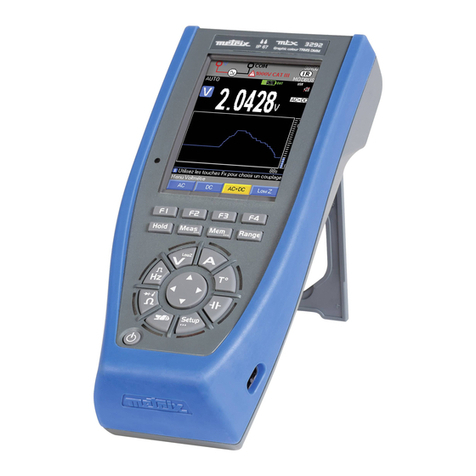
Metrix
Metrix ASYC IV MTX 3292 User manual
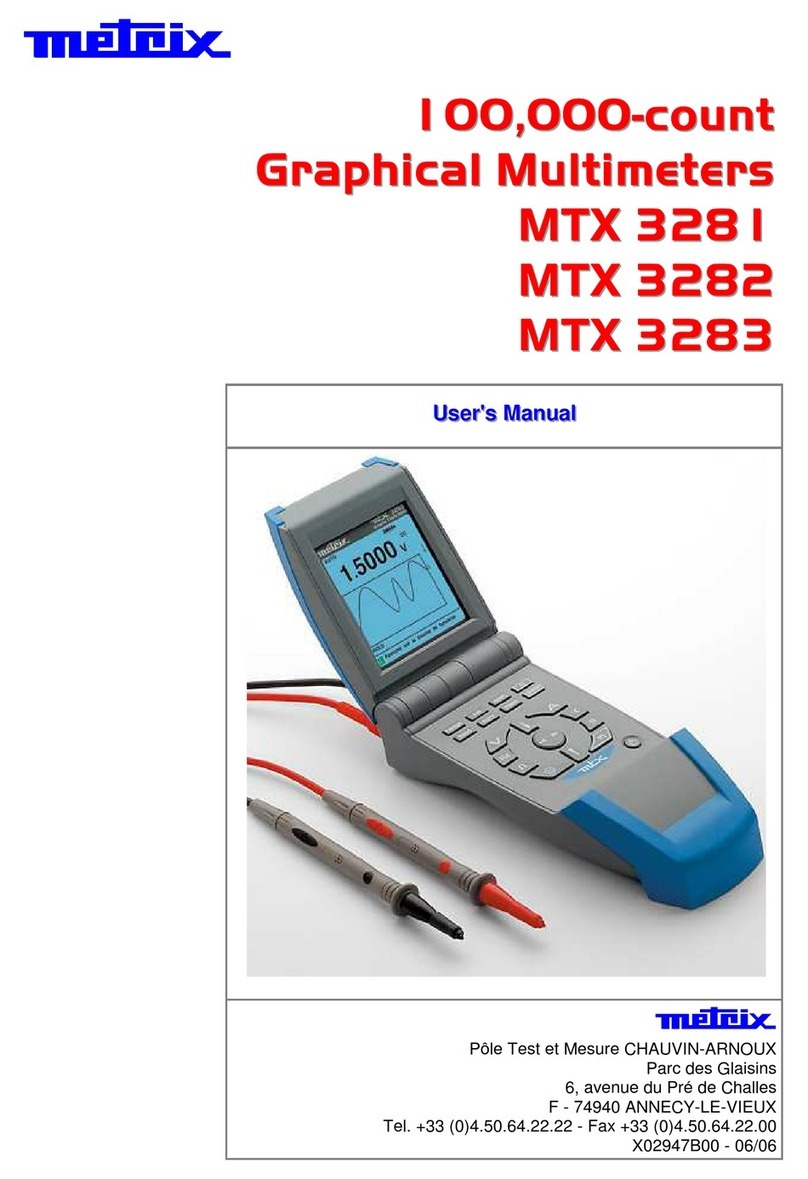
Metrix
Metrix MTX 3281 User manual
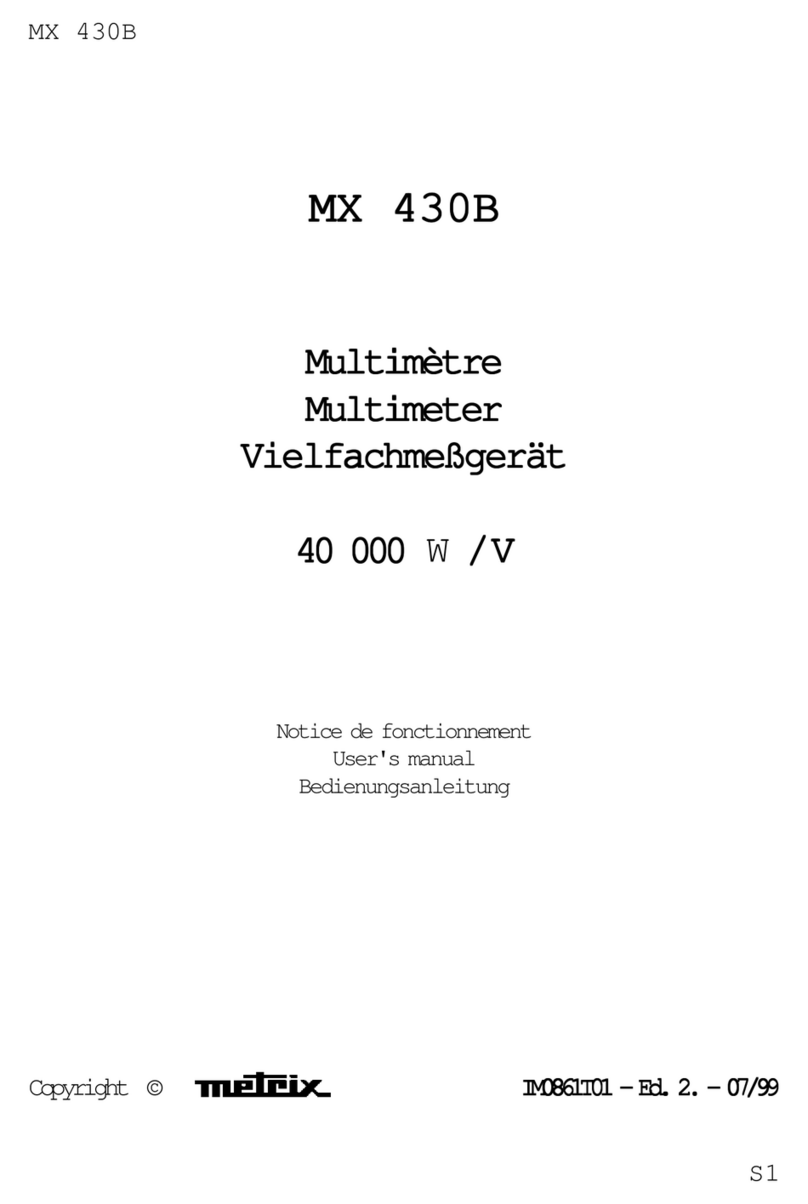
Metrix
Metrix MX 430B User manual
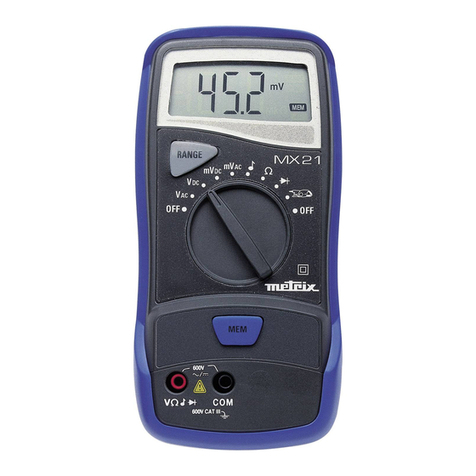
Metrix
Metrix MX 21 User manual
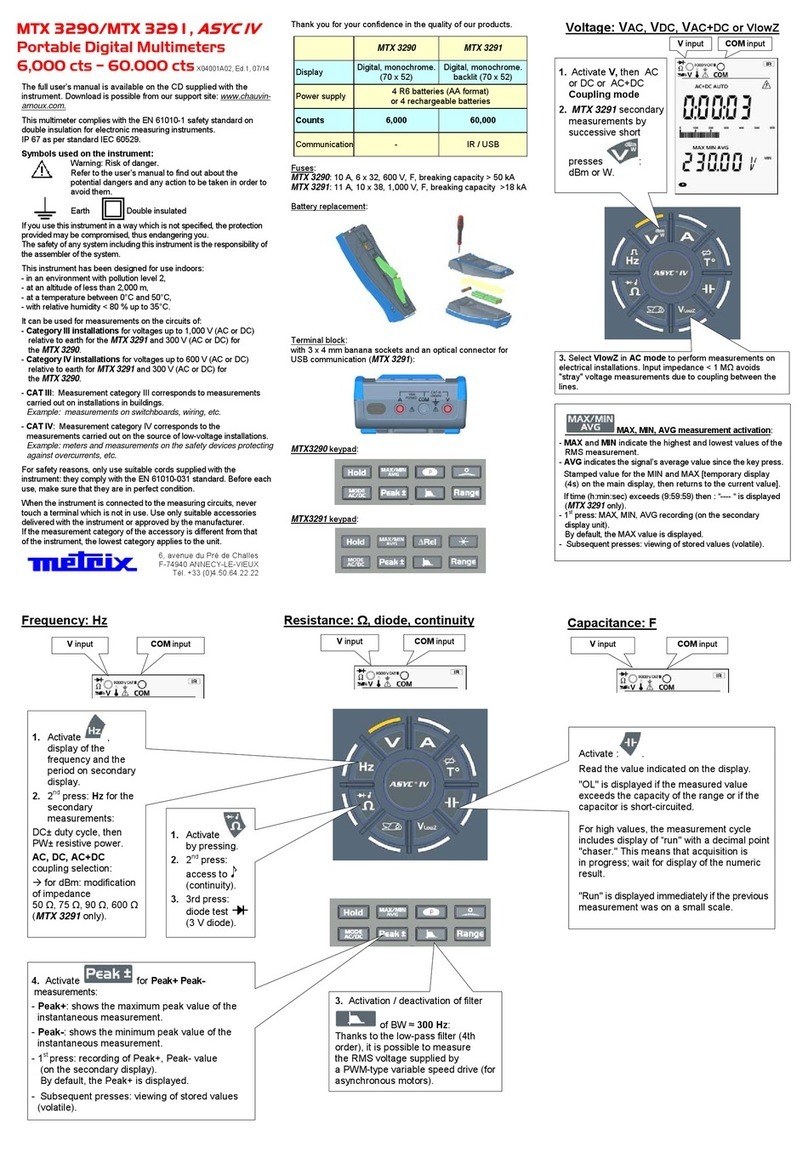
Metrix
Metrix ASYC-IV MTX 3290 User manual
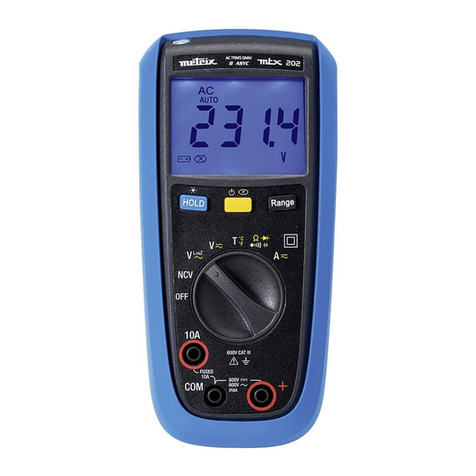
Metrix
Metrix MTX 202 User manual
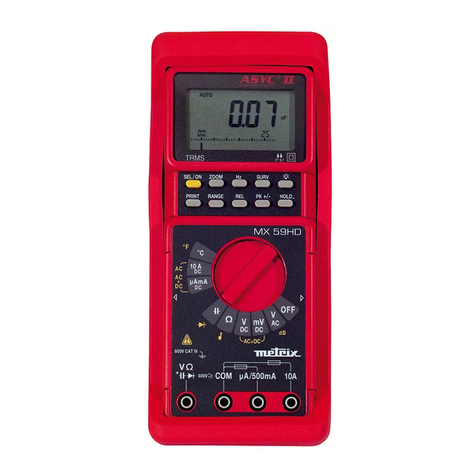
Metrix
Metrix MX 59HD User manual

Metrix
Metrix MX 20 User manual
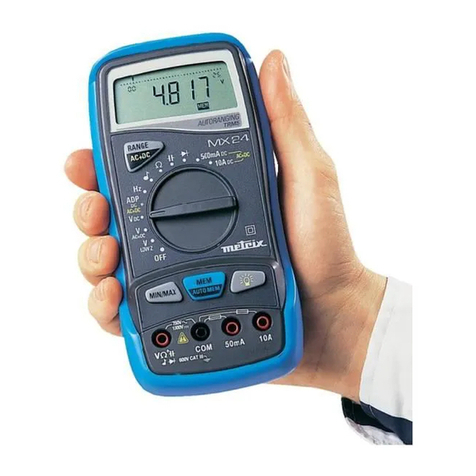
Metrix
Metrix MX 24 User manual
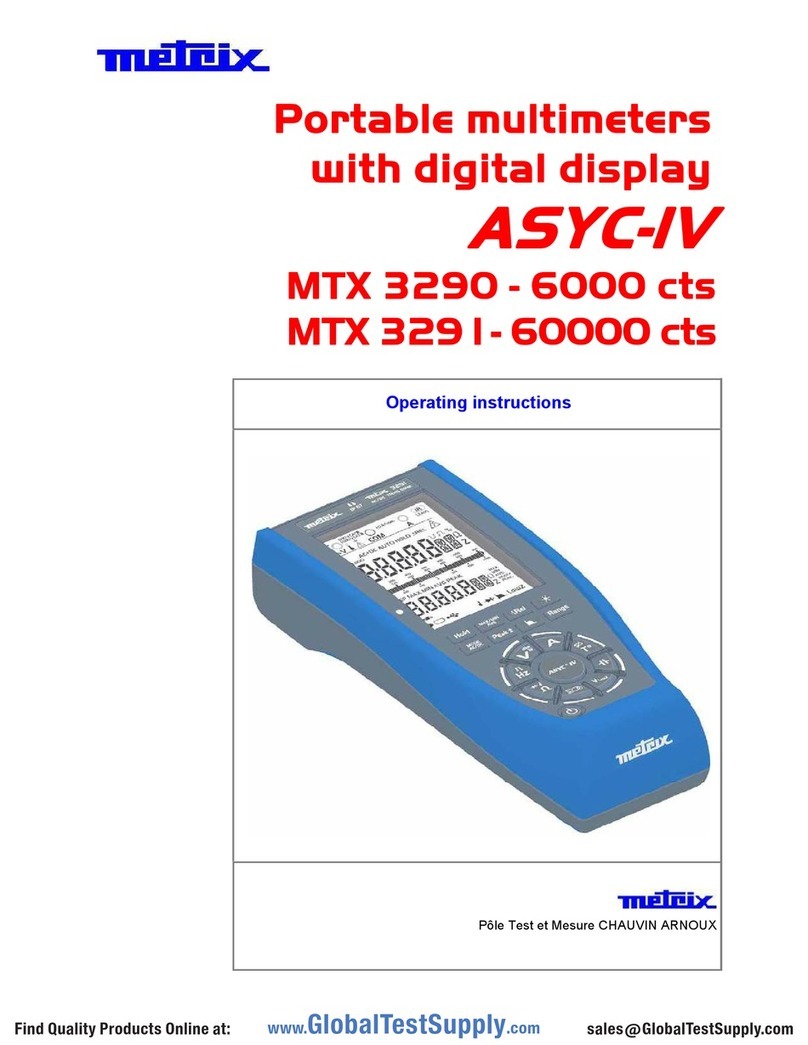
Metrix
Metrix ASYC-IV User manual

Metrix
Metrix MX 1 User manual

Metrix
Metrix MX 22 User manual
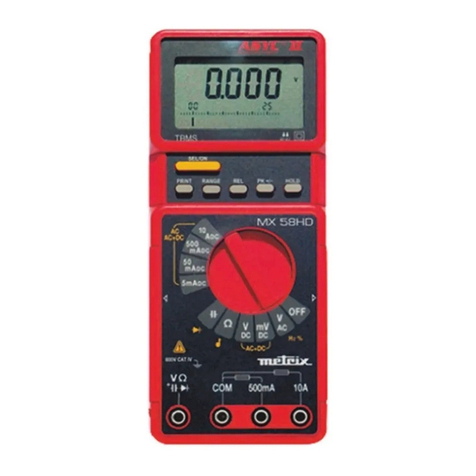
Metrix
Metrix MX 58HD User manual
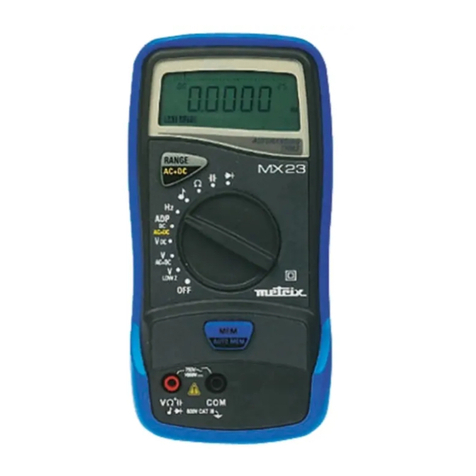
Metrix
Metrix MX 23 User manual
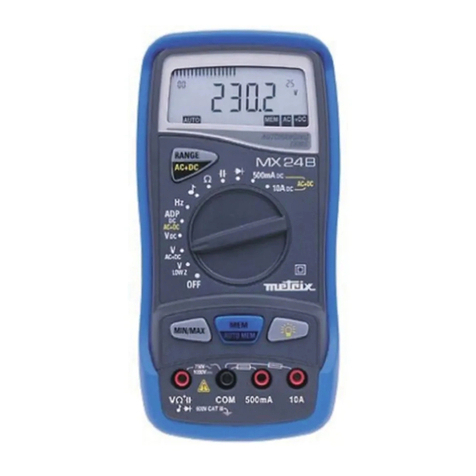
Metrix
Metrix MX 24B User manual

Metrix
Metrix MX 1 User manual
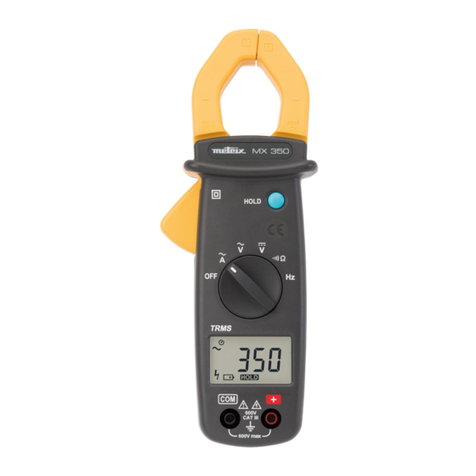
Metrix
Metrix MX 350 User manual
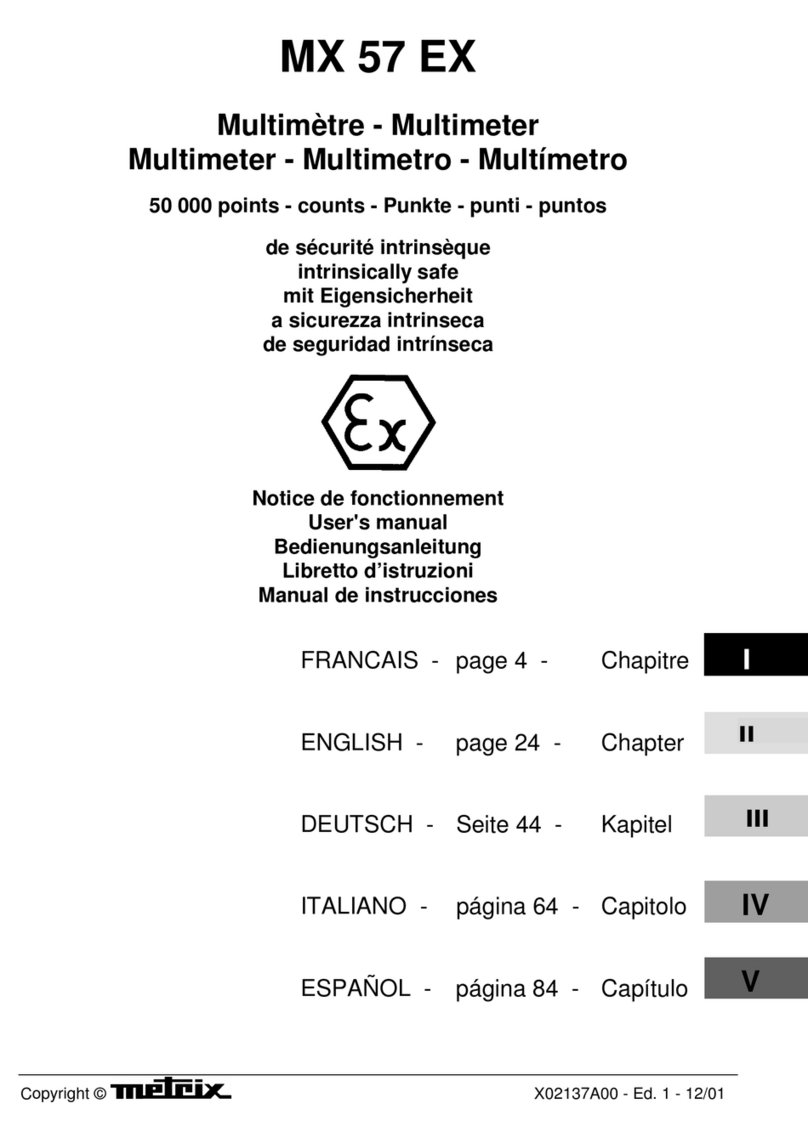
Metrix
Metrix Checkweigher User manual
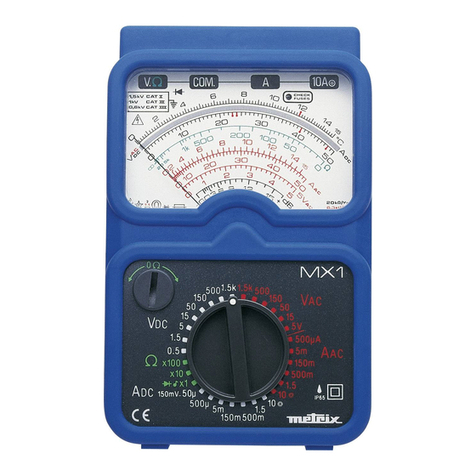
Metrix
Metrix MX 1 User manual

Metrix
Metrix MX 1 User manual
